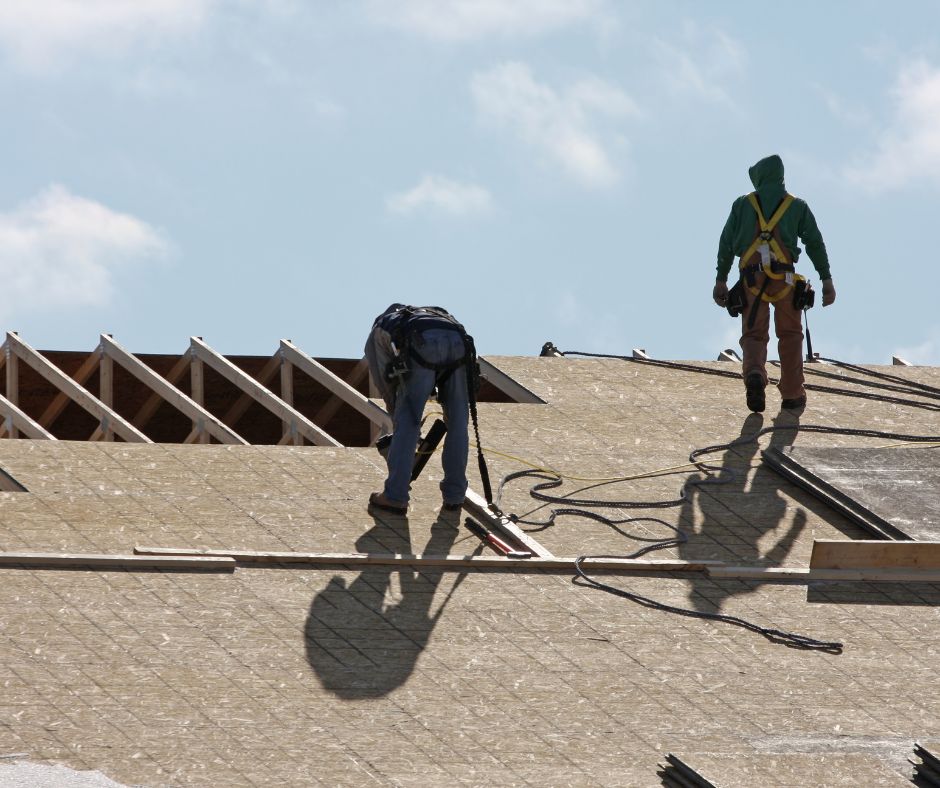How to Re-Roofing a House: A Step-by-Step Guide
Are you considering re-roofing your house? In this article, we’ll guide you through the process step by step. First, you’ll need to assess the current condition of your roof.
Then, we’ll help you choose the best roofing materials for your project. Next, our roofing specialists will show you how to prepare your roof for re-roofing, ensuring a smooth installation. Finally, we’ll cover the finishing touches and necessary maintenance. Get ready to transform your roof with our expert advice.
Assessing Your Current Roof
Before jumping into the process of re-roofing, it is crucial to evaluate the existing condition of your roof. Begin by inspecting for signs of damage, such as missing or cracked shingles, leaks, or sagging areas. Pay close attention to the age of your roof, as older roofs may require more extensive repairs or replacement. If you have a newer roof, certain repairs may be covered by your insurance, so learning how to file a roof insurance claim may be beneficial.
Once you have identified the issues, it is time to evaluate your options. Consider factors such as the type of roofing material, the durability, and the overall cost. Gather estimates from multiple roofing contractors to get an accurate understanding of the potential expenses. By carefully assessing your current roof, you can make informed decisions and estimate the cost effectively.
Choosing the Right Roofing Materials
When choosing the right roofing materials for your re-roofing project, it is important to consider the durability, cost, and aesthetic appeal of various options. Here are some roofing options to consider:
- Asphalt Shingles: A popular choice due to their affordability and ease of installation. However, they may not be as durable as other materials and have a shorter lifespan.
- Metal Roofing: Known for their longevity and resistance to extreme weather conditions. They are more expensive initially, but their durability makes them a cost-effective choice in the long run.
- Clay or Concrete Tiles: These materials offer a unique and elegant look to your roof. They are durable and have a long lifespan, but they can be heavy, requiring additional structural support.
- Wood Shingles or Shakes: These provide a natural and rustic appearance. However, they require regular maintenance and may be prone to rot and insect damage.
- Synthetic Roofing Materials: These materials mimic the look of natural materials while offering increased durability and lower maintenance requirements.
Additionally, foam roofing can be a suitable option for re-roofing projects, especially for flat or low-slope roofs.
Preparing Your Roof for Re-Roofing
To prepare your roof for re-roofing, start by removing any existing roofing materials that are damaged or worn out. Before you begin, it’s important to conduct a thorough roof inspection to identify any potential issues. Check for loose or missing shingles, damaged flashing, and signs of water damage.
This will help you determine the extent of the repairs needed and ensure a successful re-roofing process. Once you’ve completed the inspection, it’s time to take safety precautions.
Make sure to wear appropriate protective gear, such as gloves, goggles, and a hard hat. Use caution when working on the roof, especially if it’s steep or slippery. Additionally, secure any loose materials or tools to prevent accidents. By following these steps, you can effectively prepare your roof for re-roofing while prioritizing safety.
Installing the New Roof
After preparing your roof by removing damaged materials and ensuring safety precautions, it’s time to move on to installing the new roof. Here are the steps to follow for a successful installation:
- Begin by laying down a layer of underlayment, such as felt or synthetic material, to provide an extra layer of protection against moisture.
- Install the drip edge along the edges of the roof to prevent water from seeping underneath the shingles.
- Apply the shingles, starting from the bottom and working your way up. Use roofing nails to secure them in place.
- Use roofing cement to seal any gaps or seams between the shingles, ensuring a watertight seal.
- Finally, trim any excess shingles and clean up any debris from the installation process.
While it is possible to install a new roof yourself, it is highly recommended to hire a professional for this task. They have the expertise and knowledge of proper roofing techniques to ensure a long-lasting and secure roof.
Finishing Touches and Maintenance
After the new roof has been installed, it is important to conduct final inspections to ensure everything is in order. Start by checking for any loose or missing shingles, and replace them as needed. Inspect the flashing around chimneys, vents, and skylights to ensure they are properly sealed and secure.
Additionally, check the gutters and downspouts for any debris or clogs that may obstruct water flow. Regular maintenance is crucial to prolonging the lifespan of your new roof. Clean the gutters regularly and trim any overhanging tree branches that could potentially damage the roof. Periodically inspect the roof for any signs of damage or wear, and address any issues promptly. Following these maintenance tips will help keep your newly re-roofed house in optimal condition for years to come.
